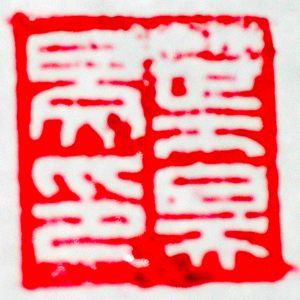
Western imperialism in Asia as presented in this article pertains to Western European entry into what was first called the East Indies. This was sparked early in the 15th century by the search for trade routes to China that led directly to the Age of Discovery, and the introduction of early modern warfare into what was then called the Far East. By the early 16th century the Age of Sail greatly expanded Western European influence and development of the Spice Trade under colonialism. There has been a presence of Western European colonial empires and imperialism in Asia throughout six centuries of colonialism, formally ending with the independence of the Portuguese Empire's last colony East Timor in 2002. The empires introduced Western concepts of nation and the multinational state. This article attempts to outline the consequent development of the Western concept of the nation state.
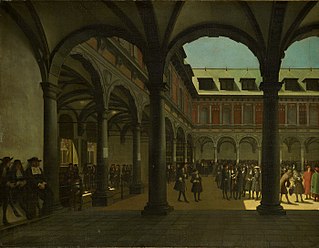
The Dutch East India Company, officially the United East India Company was an early megacorporation founded by a government-directed amalgamation of several rival Dutch trading companies (voorcompagnieën) in the early 17th century. It was established on March 20, 1602, as a chartered company to trade with Mughal India during the period of proto-industrialization, from which 50% of textiles and 80% of silks were imported, chiefly from its most developed region known as Bengal Subah. In addition, the company traded with Indianised Southeast Asian countries when the Dutch government granted it a 21-year monopoly on the Dutch spice trade. It has been often labelled a trading company or sometimes a shipping company. However, VOC was in fact a proto-conglomerate company, diversifying into multiple commercial and industrial activities such as international trade, shipbuilding, and both production and trade of East Indian spices, Formosan sugarcane, and South African wine. The Company was a transcontinental employer and an early pioneer of outward foreign direct investment. The Company's investment projects helped raise the commercial and industrial potential of many underdeveloped or undeveloped regions of the world in the early modern period. In the early 1600s, by widely issuing bonds and shares of stock to the general public, VOC became the world's first formally listed public company. In other words, it was the first corporation to be listed on an official stock exchange. It was influential in the rise of corporate-led globalisation in the early modern period.
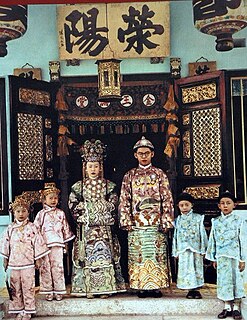
Peranakans are an ethnic group descended from Chinese settlers from the southern provinces who came to the Malay archipelago including British Malaya and Dutch East Indies and southern Thailand, primarily in Phuket and Ranong between the 15th and 17th centuries.
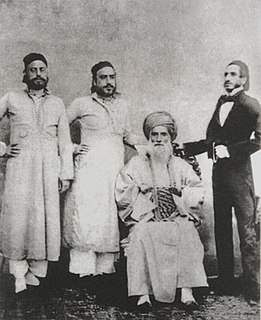
Baghdadi Jews, also known as Indo-Iraqi Jews, is the traditional name given to the former communities of Jewish migrants and their descendants from Baghdad and elsewhere in the Middle East, who settled primarily in the ports and along the trade routes around the Indian Ocean and the South China Sea.
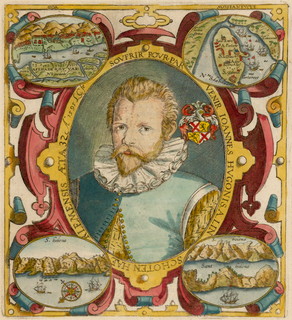
Jan Huyghen van Linschoten was a Dutch merchant, trader and historian. An alternative spelling of his second name is Huijgen.
Santa Catarina was a Portuguese merchant ship, a 1500-ton carrack, that was seized by the Dutch East India Company during February 1603 off Singapore. She was such a rich prize that her sale proceeds increased the capital of the V.O.C by more than 50%. From the large amounts of Ming Chinese porcelain captured in this ship, Chinese pottery became known in Holland as Kraakporselein, or "carrack-porcelain" for many years.
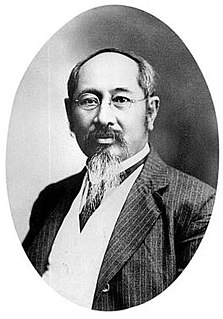
Lim Boon Keng OBE was a Peranakan physician who promoted social and educational reforms in Singapore in the early 20th-century. He also served as president of Xiamen University in China from 1921 to 1937.
Kapitan China Tan Kim Ching was a Singaporean politician and businessman. He was the eldest of the three sons of Tan Tock Seng, the founder and financier of Tan Tock Seng Hospital. He was consul for Japan, Thailand and Russia, and was a member of the Royal Court of Siam. He was one of Singapore’s leading Chinese merchants and was one of its richest men in Singapore at that time. He was also the first Asian member of the Straits Branch of the Royal Asiatic Society. After his father, Tan Tock Seng's death, he became the Kapitan China of the Straits Chinese community. He is believed to have been the head of the Triad in Malaya.

Ann Siang Hill is a small hill, and the name of a one-way road located in Chinatown, Singapore. It was named after Chia Ann Siang, a wealthy businessman. The road links Club Street and Ann Siang Road (安祥路) to South Bridge Road.
Gan Eng Seng was a Chinese businessman and philanthropist who was one of the early pioneers of Singapore. He is known for his generosity to many charitable causes in Malaya and Singapore during the British colonial era. Some of his most recognised contributions were the setting up of Gan Eng Seng School, the Thong Chai Medical Institution, Tan Tock Seng Hospital, and the Ee Hoe Hean Club.
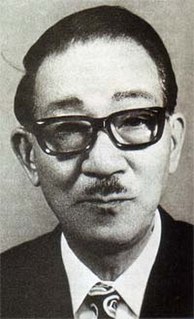
Mamoru Shinozaki was a journalist for Dentsu and spy for the Ministry of Foreign Affairs in pre-war years, a military executive in Japanese-occupied Singapore, and a businessman and writer in post-war years. He is known for the Shinozaki Case in 1940, and for his testimony in the War crimes trial in 1947 for the Sook Ching massacre.
Lim Peng Siang was a businessperson in Singapore and Malaya. Together with his brother Lim Peng Mao, he founded the Ho Hong Group of companies in 1904, which had interests in banking, shipping, parboiled rice, oil mills, cement, coconut and other businesses. He was a President of the Singapore Chinese Chamber of Commerce and a member of the Chinese Advisory Board. Peng Siang Quay in Singapore is named after him.
Lim Ho Puah was a Hokkien merchant who was born in Amoy in 1841 and came to Singapore at an early age. He was employed by Wee Bin & Co., where his abilities were noticed by his employer, Wee Bin. He later married Wee Bin's daughter. He was the founder and senior partner of the Wee Bin Steamship Line and other concerns.
Wee Boon Teck was the only son of Wee Bin and was the latter's successor at the firm of Wee Bin & Co., where he improved and strengthened the position of the firm. He served on the committees of Tan Tock Seng Hospital and Po Leung Kuk. He donated $4,000 to the Tan Tock Seng Hospital, which was invested by Government for about twenty years and which was then applied towards the cost of building a ward bearing his name in the Hospital at Moulmein Road. He was described as having a kindly and charitable disposition. Wee Boon Teck died on 22 September 1888 at the age of 38. Boon Teck Road is named after him.
Kiong Kong Tuan was a Chinese merchant from Penang. He was a merchant in Penang before establishing himself in Singapore. Kiong Kong Tuan held the revenue farms for opium in the 1830s, and also for spirits. He had a spirit factory at Pearl's Hill, and the site was known among the Chinese as Chiu-long-san. He was known to have held the opium and spirit farms in 1848, and was the last opium farmer in Singapore. He was also involved in coffee and real estate. In the 1840s he had 50 acres (200,000 m2) of coffee planted near Jurong. Kiong was the grantee of a large, 20 acres (81,000 m2) tract of land, with Chin Swee Road as the main artery and Cornwall Street and Seok Wee Road as side streets, which was a densely-populated Straits Chinese residential quarter.

Kapitan Cina Lim Ah Siang, a timber merchant and steam saw miller, the founder of "Chop Sin Moh" Johor Bahru, was the third leader of the Ngee Heng Kongsi of Johor, a legitimised secret society based in Johor Bahru. Ironic as it may seem, he was appointed to the position not because he was the most prominent Chinese in Johor at the time, but because he was not.
United Overseas Bank Limited is a Singaporean multinational banking organisation headquartered in Singapore, with branches mostly found in most Southeast Asian countries. Founded in 1935 as United Chinese Bank (UCB) by Sarawak businessman Wee Kheng Chiang, the bank was set up together with a group of Chinese-born businessmen. The bank is the third largest bank in South East Asia by total assets.
Phoa Liong Gie Sia was an Indonesian-born Swiss jurist, politician and newspaper owner of the late colonial era in the Dutch East Indies.
